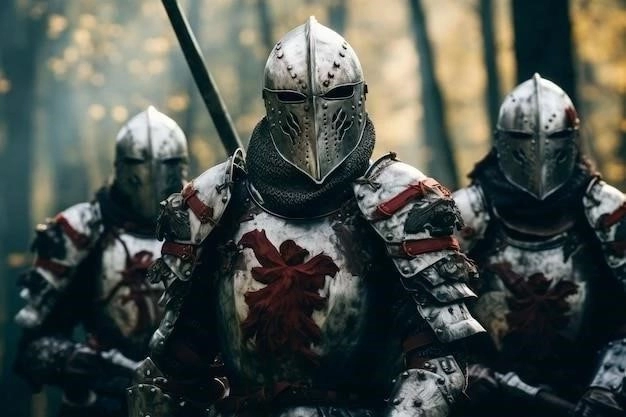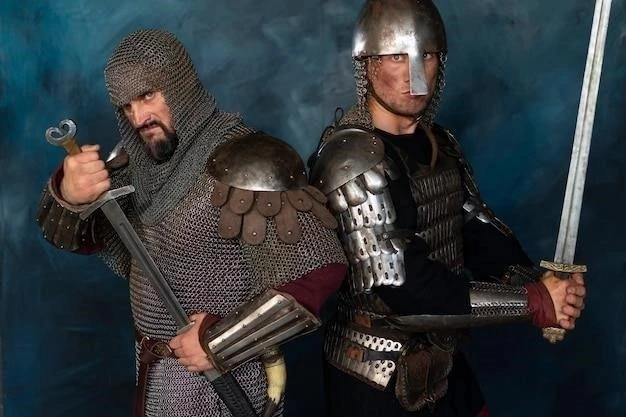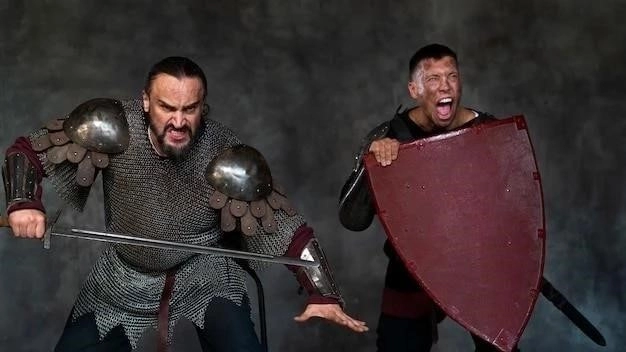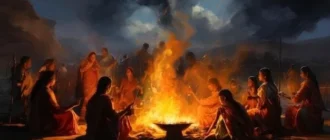Warfare‚ an unfortunate constant throughout human history‚ has shaped civilizations‚ toppled empires‚ and spurred technological innovation. From the ancient world’s clashes of bronze and iron to the modern era’s cyber warfare‚ the nature of conflict has constantly evolved‚ reflecting humanity’s ever-changing relationship with violence and power. This article delves into the historical tapestry of warfare‚ exploring its evolution across distinct periods and highlighting key turning points that redefined military strategy‚ technology‚ and the very concept of war itself.

Ancient Warfare: The Dawn of Organized Conflict (Prehistory ‒ 500 CE)
The origins of warfare are shrouded in prehistory‚ intertwined with the emergence of settled agriculture and the rise of early civilizations. While prehistoric hunter-gatherer societies likely engaged in small-scale conflicts over resources‚ the development of agriculture and the subsequent accumulation of wealth and territory provided the impetus for larger‚ more organized warfare.
- The Rise of City-States and Empires: As early civilizations developed in Mesopotamia‚ Egypt‚ and the Indus Valley‚ competition for resources and dominance led to the formation of city-states and later‚ empires. These entities fielded organized armies‚ often led by kings or warrior elites‚ signifying a shift from sporadic tribal skirmishes to more structured forms of conflict.
- Bronze and Iron Age Technology: Technological advancements played a crucial role in shaping ancient warfare. The Bronze Age (circa 3000-1200 BCE) witnessed the development of bronze weapons and armor‚ giving a military edge to those who possessed the resources and technology for their production. The subsequent Iron Age (circa 1200 BCE) saw iron‚ with its superior strength and abundance‚ gradually replace bronze‚ further transforming military capabilities and tactics.
- Chariots and Infantry: Ancient armies primarily relied on a combination of chariots and infantry. Chariots‚ initially used as shock weapons to break enemy lines‚ represented a significant technological and tactical advantage. Infantry formations‚ equipped with a variety of weapons like spears‚ swords‚ and bows‚ provided the backbone of ancient armies‚ engaging in close-quarters combat.
- Early Siege Warfare: As cities grew in size and importance‚ siege warfare emerged as a crucial aspect of ancient warfare. Attackers developed siege engines like battering rams‚ siege towers‚ and catapults to overcome defensive fortifications‚ while defenders relied on walls‚ moats‚ and ranged weapons to repel sieges.
- The Battle of Kadesh (circa 1274 BCE): Fought between the Egyptians under Ramesses II and the Hittites under Muwatalli II‚ this battle‚ one of the earliest documented military engagements‚ showcased the use of chariots and the importance of strategic maneuvering in large-scale battles.
- The Peloponnesian War (431-404 BCE): This decades-long conflict between the Greek city-states of Athens and Sparta highlighted the devastating impact of prolonged warfare on ancient societies. The war’s complex interplay of land and naval battles‚ political intrigue‚ and plague demonstrated the multifaceted nature of ancient warfare.
- The Punic Wars (264-146 BCE): A series of three wars between Rome and Carthage‚ the Punic Wars marked a turning point in Mediterranean history. Rome’s eventual victory paved the way for its transformation into a dominant power‚ showcasing its military prowess and adaptability in both land and naval warfare.
Medieval Warfare: Knights‚ Castles‚ and the Age of Faith (500, 1500 CE)
The medieval period‚ marked by the decline of the Western Roman Empire and the rise of feudalism‚ witnessed significant changes in the nature of warfare. With the fragmentation of centralized power‚ Europe descended into a period of frequent conflicts‚ characterized by the dominance of heavily armored knights‚ the construction of imposing castles‚ and the influence of religious fervor.
- The Rise of Feudalism and the Knightly Class: Feudalism‚ a decentralized social and political system‚ shaped the nature of warfare in medieval Europe. Lords granted land (fiefs) to vassals in exchange for military service‚ leading to the emergence of a warrior aristocracy – the knights. Trained from a young age in horsemanship and combat‚ knights‚ clad in mail or plate armor‚ dominated the battlefields of the early medieval period.
- Castles: Fortifications of Power: Castles‚ imposing stone structures strategically placed across the landscape‚ became symbols of power and protection during the medieval period. Their strong defenses and ability to withstand sieges made them formidable military assets‚ influencing both offensive and defensive strategies.
- The Development of Infantry Tactics: While knights represented the pinnacle of military prowess‚ the development of effective infantry tactics‚ particularly the use of pike formations‚ provided a counter to heavy cavalry. The rise of professional infantry forces‚ such as the English longbowmen and Swiss pikemen‚ demonstrated the vulnerability of even the most heavily armored knights to disciplined and well-equipped foot soldiers.
- The Crusades: Religion and Warfare: The Crusades‚ a series of religious wars sanctioned by the Catholic Church‚ exemplified the intertwining of faith and warfare during the medieval period. Driven by religious zeal‚ European armies launched expeditions to reclaim the Holy Land from Muslim control‚ leading to centuries of conflict and cultural exchange.
- The Battle of Hastings (1066 CE): This decisive battle between the Norman-French army of William the Conqueror and the English forces under King Harold Godwinson marked the beginning of the Norman Conquest of England. The battle highlighted the changing nature of warfare‚ with cavalry playing a pivotal role in William’s victory.
- The Hundred Years’ War (1337-1453): A protracted conflict between England and France‚ the Hundred Years’ War showcased the evolution of military technology and tactics. The English longbow‚ a powerful ranged weapon‚ proved devastatingly effective against traditional knightly charges‚ while the French gradually adopted gunpowder weapons‚ foreshadowing the future of warfare.
- The Fall of Constantinople (1453 CE): The capture of Constantinople‚ the capital of the Byzantine Empire‚ by the Ottoman Turks marked a significant turning point in history. The Ottomans’ use of gunpowder artillery‚ particularly the massive cannon known as “Basilica‚” played a crucial role in breaching the city’s formidable defenses.

Early Modern Warfare: Gunpowder‚ Empires‚ and the Birth of the Nation-State (1500 ‒ 1800 CE)
The early modern period witnessed a profound transformation in warfare‚ driven by the widespread adoption of gunpowder weapons‚ the rise of powerful centralized states‚ and the emergence of overseas empires. This era marked a departure from the dominance of knights and castles‚ ushering in a new age of professional armies‚ increasingly sophisticated firearms‚ and global conflicts.
- The Gunpowder Revolution: The introduction of gunpowder weapons‚ initially in the form of cannons and later muskets and handguns‚ revolutionized warfare. Cannons could shatter castle walls‚ rendering traditional fortifications obsolete‚ while firearms gradually displaced bows and crossbows‚ reducing the importance of armored knights on the battlefield.
- The Rise of Professional Armies: With the decline of feudalism‚ monarchs and rulers began to establish standing‚ professional armies. These armies‚ equipped and trained with standardized weapons and tactics‚ proved more effective than feudal levies‚ leading to a shift from short-term campaigns to longer‚ more logistically demanding wars.
- The Age of Exploration and Colonial Warfare: The European Age of Exploration‚ driven by the search for new trade routes and resources‚ led to the establishment of overseas empires and a new era of colonial warfare. European powers clashed with each other and indigenous populations‚ employing gunpowder weapons‚ naval power‚ and complex logistics to secure and maintain their colonial possessions.
- The Birth of the Nation-State: The early modern period witnessed the emergence of the nation-state as the dominant political entity in Europe. With a sense of shared identity and centralized power‚ nation-states could mobilize greater resources and manpower for war‚ leading to larger‚ more destructive conflicts.
- The Italian Wars (1494-1559): A series of conflicts fought primarily on Italian soil‚ the Italian Wars involved major European powers vying for regional dominance. These wars marked the beginning of the widespread use of gunpowder weapons and the development of new military tactics to adapt to their impact.
- The Thirty Years’ War (1618-1648): A devastating conflict fought primarily in Central Europe‚ the Thirty Years’ War began as a religious conflict between Protestant and Catholic states but evolved into a broader struggle for power and territory. The war’s widespread devastation and brutality marked a turning point in European history.
- The English Civil War (1642-1651): This conflict‚ fought between the Royalist forces of King Charles I and the Parliamentarians led by Oliver Cromwell‚ exemplified the political and religious upheavals of the 17th century. The war’s innovative use of cavalry and the emergence of professional‚ disciplined armies had a lasting impact on military thinking.

Modern Warfare: Industrialization‚ Total War‚ and the Rise of Technology (1800 ‒ 1945)
The modern era witnessed the industrialization of warfare‚ transforming it into a truly global phenomenon with unprecedented levels of destruction. The advent of mass production‚ new technologies like railroads‚ telegraphs‚ and later‚ aircraft and tanks‚ led to total wars that mobilized entire societies and blurred the lines between civilians and combatants.
- The Industrial Revolution: The Industrial Revolution‚ beginning in the late 18th century‚ had a profound impact on warfare. Mass production techniques allowed for the manufacture of vast quantities of weapons and ammunition‚ while new technologies like the steam engine‚ railroads‚ and the telegraph revolutionized transportation‚ communication‚ and logistics.
- The Rise of Nationalism and Imperialism: The 19th and early 20th centuries witnessed the rise of intense nationalism and imperial rivalries. Competition for resources‚ colonies‚ and global influence fueled tensions between European powers and contributed to the outbreak of major conflicts.
- Trench Warfare and the Machine Gun: World War I (1914-1918) introduced the horrors of trench warfare. The machine gun‚ a devastatingly effective defensive weapon‚ created stalemates along fortified front lines‚ leading to unprecedented casualties and a war of attrition. New technologies like poison gas‚ tanks‚ and aircraft emerged in an attempt to break the deadlock.
- Total War and the Home Front: World War II (1939-1945) marked the terrifying escalation to total war. Entire societies were mobilized for the war effort‚ with civilians playing a crucial role in production‚ propaganda‚ and even combat. Strategic bombing campaigns targeted cities and industrial centers‚ blurring the lines between military and civilian targets.
- The Atomic Age: The culmination of World War II with the atomic bombings of Hiroshima and Nagasaki in 1945 ushered in the terrifying dawn of the atomic age. The unprecedented destructive power of nuclear weapons marked a fundamental shift in the nature of warfare‚ raising existential questions about the future of humanity.
- The Napoleonic Wars (1803-1815): Napoleon Bonaparte’s military campaigns across Europe revolutionized warfare. His innovative use of artillery‚ combined with his emphasis on mobility and decisive battles‚ dominated the battlefields of the early 19th century.
- The American Civil War (1861-1865): This conflict‚ fought between the United States and the Confederate States of America‚ showcased the impact of industrialization on warfare. Railroads‚ telegraphs‚ and mass-produced weapons played significant roles‚ foreshadowing the scale and technological advancements of future conflicts.
- World War I (1914-1918): The “Great War‚” triggered by a complex web of alliances and nationalist tensions‚ introduced the horrors of modern industrial warfare. Trench warfare‚ machine guns‚ and chemical weapons resulted in unprecedented casualties and a profound sense of disillusionment.
- World War II (1939-1945): The deadliest conflict in human history‚ World War II engulfed the globe‚ pitting the Axis powers (Germany‚ Japan‚ Italy) against the Allies. The war witnessed the full mobilization of entire societies‚ the development of new technologies like jet aircraft and radar‚ and the horrors of the Holocaust.
Contemporary Warfare: The Cold War‚ Asymmetric Conflicts‚ and the Digital Age (1945 — Present)
The post-World War II era has been marked by the specter of nuclear annihilation‚ the rise of asymmetric warfare‚ and the growing influence of technology‚ particularly in the realm of cyberwarfare. While large-scale conventional conflicts between major powers have become less common‚ the nature of warfare has become more complex‚ blurring the lines between state and non-state actors‚ conventional and unconventional tactics‚ and the physical and digital domains.
Key Developments and Characteristics:
- The Cold War and the Nuclear Threat: The Cold War (1947-1991)‚ an ideological and geopolitical struggle between the United States and the Soviet Union‚ introduced the constant threat of nuclear annihilation. This era of proxy wars‚ espionage‚ and military buildups highlighted the terrifying potential consequences of a direct conflict between superpowers.
- Guerrilla Warfare and Asymmetric Conflicts: The Cold War and post-Cold War periods witnessed a rise in guerrilla warfare and asymmetric conflicts. Non-state actors‚ often with limited conventional military capabilities‚ employed guerrilla tactics‚ terrorism‚ and unconventional strategies to achieve their objectives against larger‚ more technologically advanced adversaries.
- The Rise of Technology: Technology has continued to reshape warfare in the 21st century. Precision-guided munitions‚ drones‚ advanced surveillance systems‚ and cyberwarfare capabilities have become increasingly prevalent‚ blurring the lines between conventional and unconventional warfare.
- Cyberwarfare and Information Warfare: The digital age has given rise to new forms of conflict. Cyberwarfare‚ involving attacks on computer systems‚ infrastructure‚ and networks‚ has become a significant aspect of modern warfare‚ with the potential to disrupt critical services‚ spread misinformation‚ and influence the course of conflicts.
Notable Conflicts:
- The Korean War (1950-1953): This conflict‚ often considered a proxy war between the United States and the Soviet Union‚ highlighted the complexities of Cold War confrontations and the potential for escalation.
- The Vietnam War (1955-1975): The United States’ involvement in Vietnam showcased the challenges of fighting a protracted guerrilla war against a determined enemy. The conflict’s impact on American society and the global political landscape was profound.
- The Soviet-Afghan War (1979-1989): The Soviet Union’s invasion of Afghanistan demonstrated the difficulties of waging war in a complex and hostile environment against a resilient insurgency‚ contributing to the eventual collapse of the Soviet empire.
- The “War on Terror”: The September 11 attacks in 2001 ushered in a new era of global conflict. The “War on Terror‚” with its focus on combating terrorism and extremism‚ has involved military interventions in Afghanistan‚ Iraq‚ and other countries‚ highlighting the challenges of addressing transnational threats and the complex interplay of ideology‚ politics‚ and violence.
The Future of Warfare: Uncertain Horizons
Predicting the future of warfare is a daunting task. However‚ several trends suggest potential directions:
- Technological Advancement: Rapid technological advancements in artificial intelligence (AI)‚ robotics‚ hypersonic weapons‚ and cyberwarfare will continue to shape the battlefields of the future. Autonomous weapons systems‚ AI-powered decision-making‚ and the increasing integration of cyber and information warfare raise profound ethical and strategic questions.
- Hybrid Warfare: The lines between conventional and unconventional warfare‚ state and non-state actors‚ and the physical and digital realms will continue to blur. Hybrid warfare‚ combining elements of conventional military force‚ cyberattacks‚ disinformation campaigns‚ and economic coercion‚ is likely to become increasingly prevalent.
- Space as a New Frontier: As space becomes more accessible and militarized‚ the potential for conflict in this domain will increase. Anti-satellite weapons‚ space-based surveillance systems‚ and the weaponization of space pose significant risks to global security.
Conclusion: A Legacy of Conflict‚ a Hope for Peace
The history of warfare is a sobering reminder of humanity’s capacity for violence and destruction. From ancient battles fought with bronze and iron to modern conflicts waged with sophisticated technology‚ the nature of war has constantly evolved‚ reflecting our changing relationship with power‚ technology‚ and the very nature of conflict itself. As we confront the challenges of the 21st century‚ understanding the history of warfare‚ its causes and consequences‚ is essential for navigating the complex landscape of international relations and striving for a more peaceful future.










